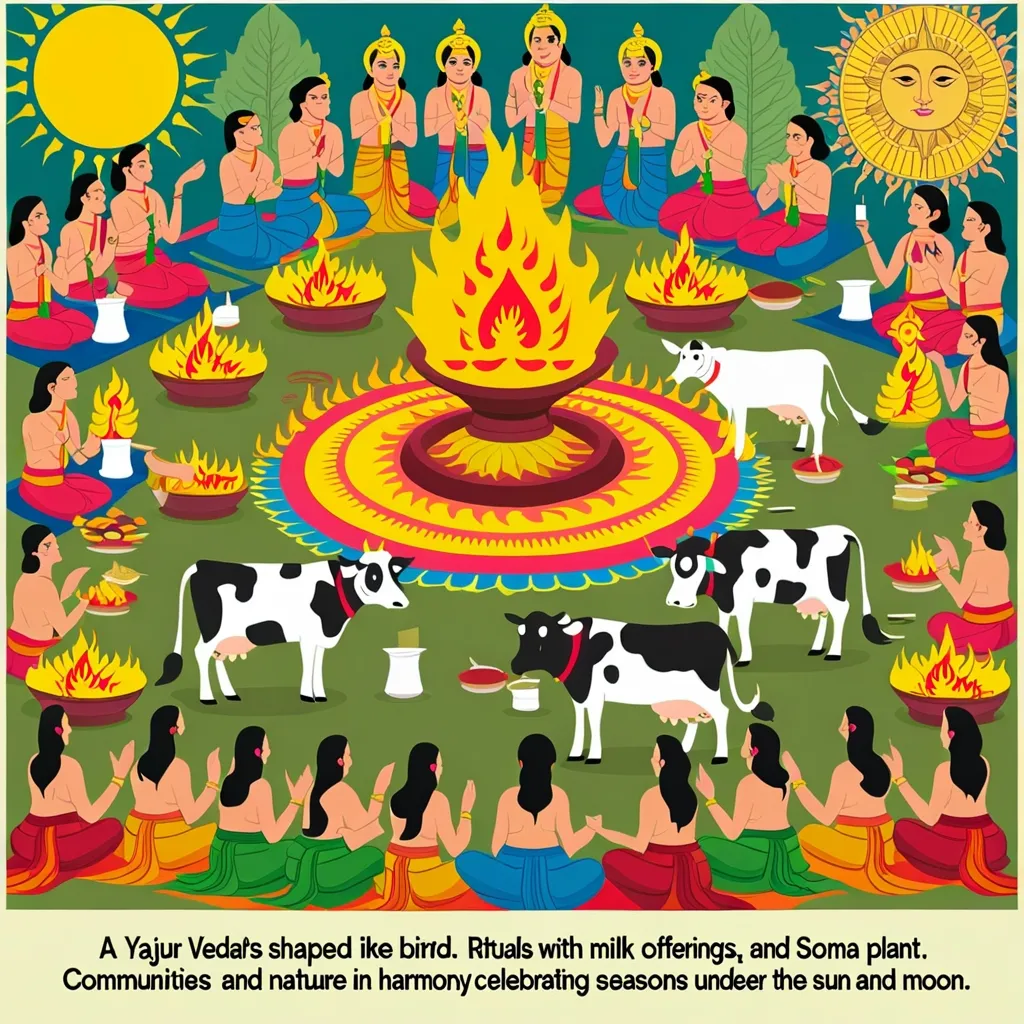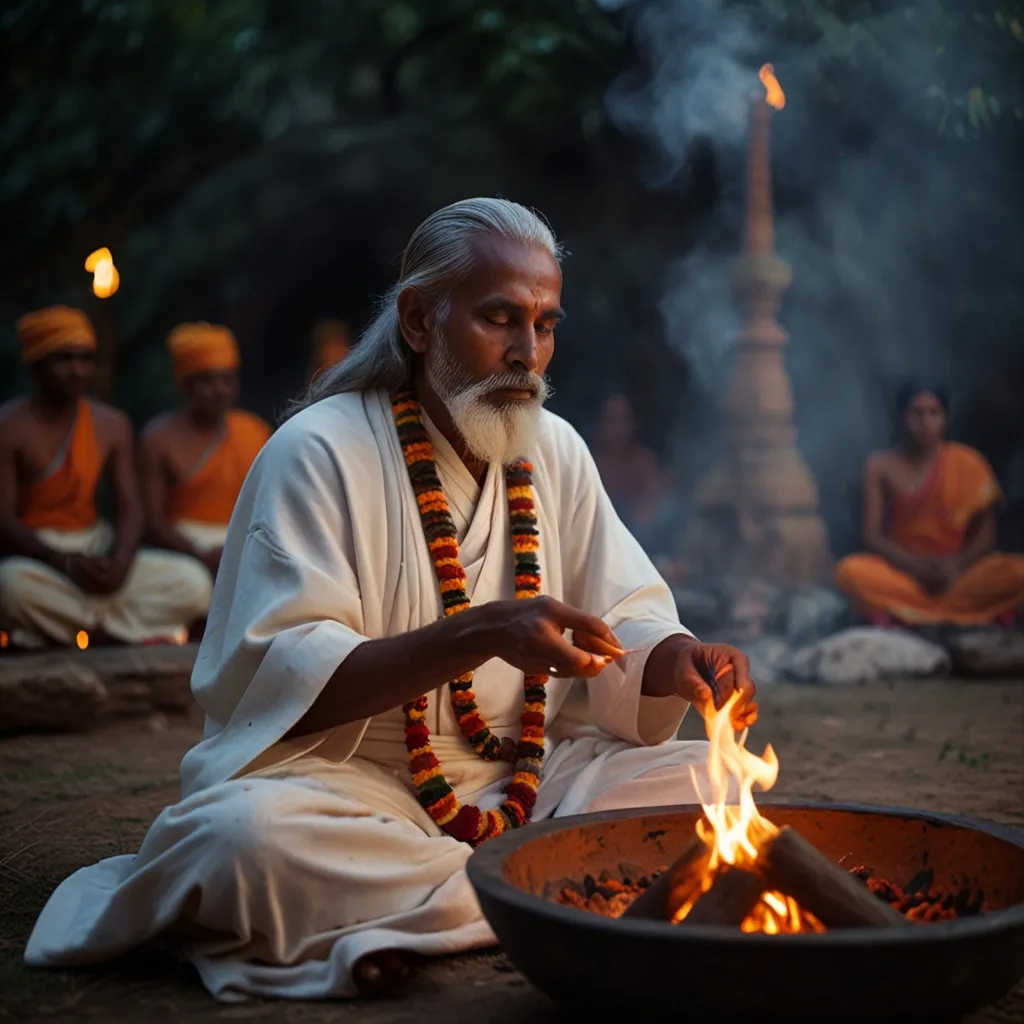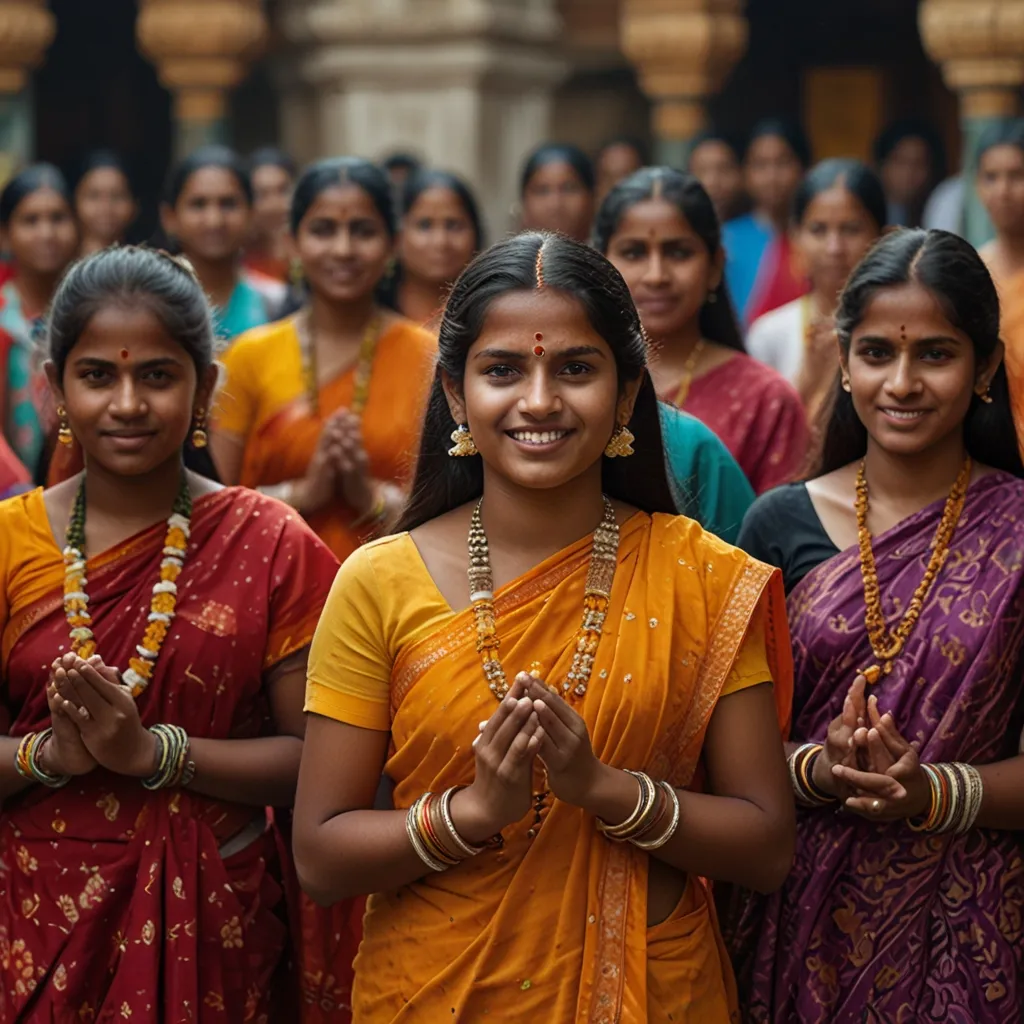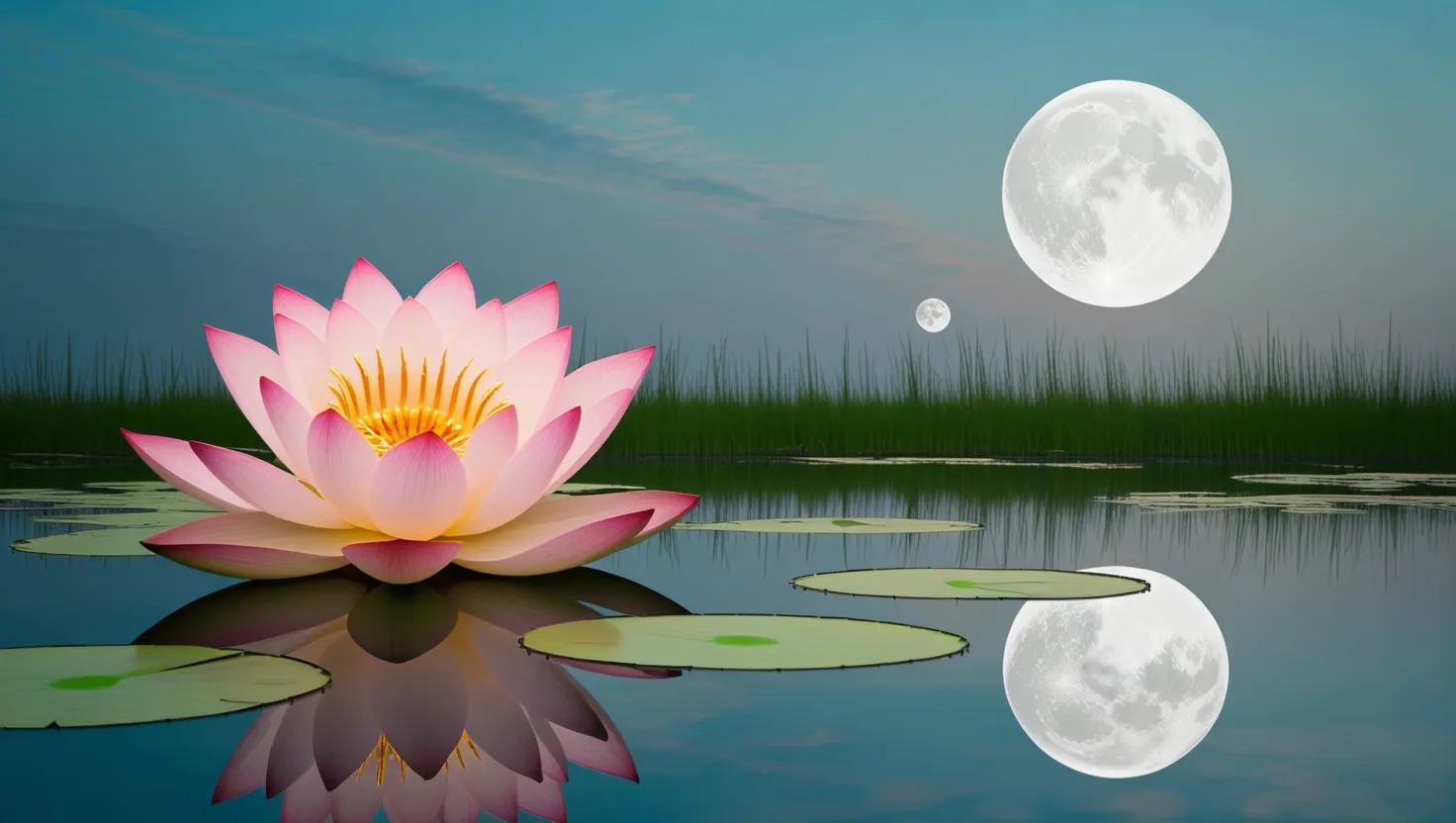The Hindu scriptures are like a tapestry woven with threads of spirituality, rituals, and wisdom. Among these, the Yajur Veda shines brightly, offering not just mantras and rituals but a guide to living harmoniously with nature and the divine. This ancient text highlights the beauty of seasonal rituals that align with nature’s cycles, ensuring community well-being, land fertility, and ecological balance.
Picture this: The Yajur Veda splits the year into various seasons, each season bringing its own set of rituals and sacrifices. The Darṣapūrṇamāsa rituals, for instance, are performed during new and full moon days. It involves offering cow milk to the fire and separating calves from their mothers, symbolizing the nourishment and cycle of life.
With the arrival of spring, summer, and autumn, the Cāturmāsya sacrifices are a big deal. These seasonal rituals are vital for good harvests and the community’s prosperity. Spring brings prayers for crop growth and cattle protection, highlighting the connection between seasonal changes and the rituals performed.
Agriculture held a special place in ancient Indian society, and this importance is reflected in the Yajur Veda’s rituals. The Agnihotra, a daily milk oblation ritual, symbolizes the nourishment of both the earth and the divine. This ritual is often paired with seasonal sacrifices to promote a bountiful harvest. Another significant ritual is the Soma sacrifice, involving the ceremonial extraction and offering of the soma plant’s juice to the gods. While the identity of the soma plant remains debated, its role in ensuring good rains, protecting crops, and warding off harvest-damaging demons is undeniable.
Fire rituals and the construction of fire altars are central themes in the Yajur Veda. The Agnicayana ritual, lasting several days, involves building detailed fire altars with thousands of bricks. These altars are often shaped like birds, symbolizing the ascension of prayers to the heavens. It’s more than just physical construction—it’s a spiritual exercise that elevates the soul and connects with the divine.
Besides regular seasonal rituals, the Yajur Veda describes several special and symbolic sacrifices. The Ashvamedha, or horse sacrifice, is a grand ritual performed by kings to ensure universal success and prosperity. This ritual involves releasing a horse to roam freely for a year, symbolizing the king’s power and land fertility. Then there’s the Pitriyajna, part of funeral ceremonies involving offerings to ancestors. It underscores honoring one’s ancestors and maintaining familial and communal continuity.
Community and family rituals also find a vital place in the Yajur Veda. Ceremonies like the Vājapeya and Rājasūya, variants of the soma sacrifice, involve chariot races and king consecrations. These aren’t just individual worship acts but involve widespread community participation and celebrating life’s milestones. Additionally, rituals like the Gopitṛyajña and Śūlagava emphasize community service and animal veneration, particularly cows, which hold sacred status in Hindu culture.
Even though these rituals were composed thousands of years ago, they continue to be relevant and practiced today. Modern adaptations of the traditional yajna fire rites are seen in movements like the Arya Samaj and organizations like the Gayatri Pariwar. These contemporary yajnas often see large gatherings with multiple fire altars, where families and communities come together to perform rituals for everyone’s well-being.
In these modern versions, the essence of the Yajur Veda remains intact. These rituals still empower worshipers, providing a direct connection to their ancestors, the gods, and the natural world. They remind us of the importance of living in harmony with nature and respecting life’s cycles.
The Yajur Veda’s seasonal rituals are a testament to the deep understanding ancient Indians had of nature and their spiritual bond with the divine. Adapted to the time and season, these rituals ensure community balance and prosperity. As we explore these ancient practices, we uncover spiritual and practical wisdom that continues to guide and inspire us today.
These rituals and their profound wisdom encapsulate the essence of the Yajur Veda, reminding us of life’s interconnectedness and the significance of honoring the divine in every facet of our existence.






